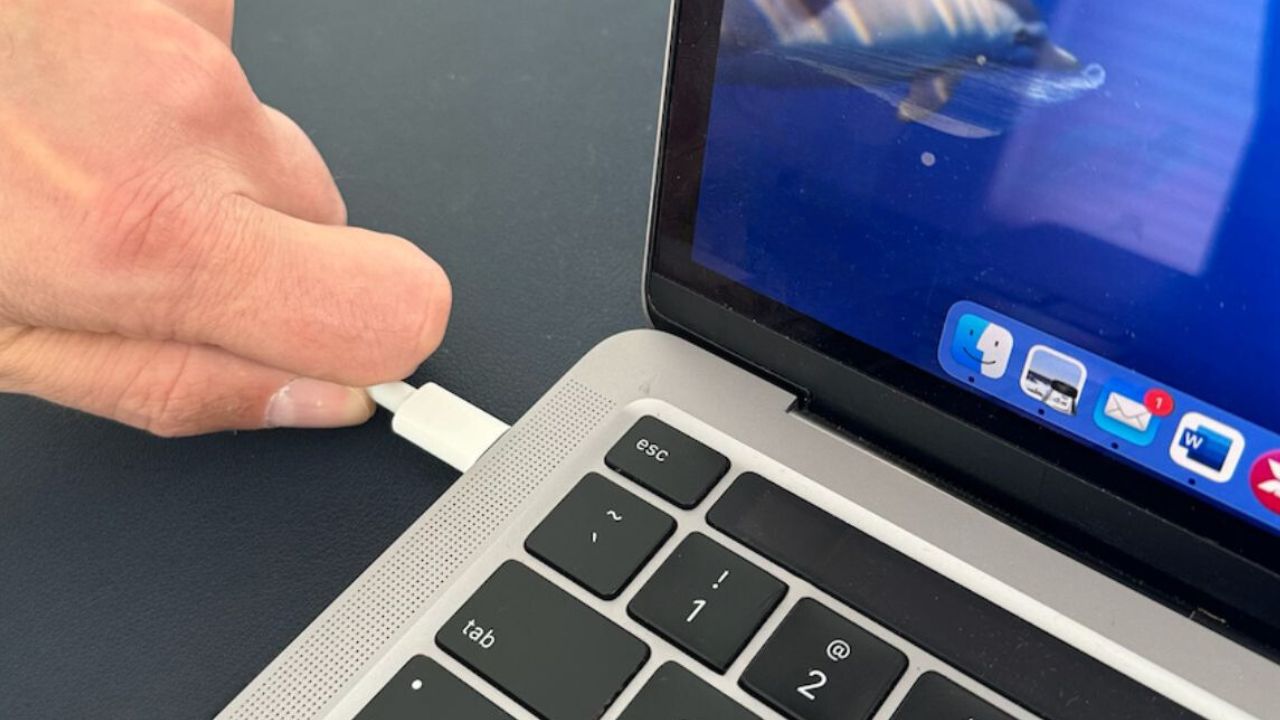In today’s digital age, it’s not uncommon to be on the receiving end of some unsolicited and potentially malicious online advice. Take, for instance, the concern raised by Barbara who reached out with a question that might have crossed many minds:
Hi, Kurt. I can’t remember if I read this online or someone told me about it, but when you receive a pop-up message, you should pull the plug on your computer immediately; this prevents the scammer from having any further access to your work. Is this the right thing to do?
Pop-ups used to be one of the most common ways that scammers would penetrate a person’s computer. It’s less common nowadays which may be one of the reasons the unplugging (or restarting one’s computer) method came to be. Well, the quick answer is “no”. Instead of just debunking this myth once and for all, let’s talk a bit more about why it’s not recommended and what to do instead.

What never to do when you see a pop-up message
It’s important to be cautious when dealing with pop-up messages, as they can be used by scammers to trick you into downloading malware or giving away your personal information. So, you’re right in taking a second to figure out your next move.
But turning the power off on your computer immediately when you receive a pop-up message is not the right thing to do. This could potentially cause data loss or damage to your computer, which can wreak havoc in other ways. It could also potentially let in more scammers in the future due to vulnerabilities in your system.
It’s also worth mentioning that if the pop-up message is a malicious link or file, scammers these days have a lot more sophisticated strategies, and merely unplugging your computer wouldn’t necessarily stop them. Don’t worry, though. There are ways to protect yourself.

MORE: BEST PRIVATE AND SAFE ALTERNATIVES TO GOOGLE
What you should do when you see a pop-up message
So, if unplugging your computer isn’t the answer, what can you do instead if you see a pop-up message, especially one that looks suspicious? Follow the steps below:
Don’t click on the pop-up message: If you receive a pop-up message, don’t click on it or enter any personal information. Instead, close the window by clicking on the “X” button in the top right corner of the window. Be on the look out for fake pop-ups that appear in your browser window that are trying to trick you into clicking on them. These pop-ups are not coming from your computer but from a malicious file that has integrated itself into your browser and is displaying images that look like pop-ups. If you click on them, you might end up downloading more malware, giving away your personal information, or paying money for a fake service.
MORE: BEWARE OF THIS MCAFEE GOOGLE CHROME AD SCAM
Watch out for download pop-ups: If you’re receiving a pop-up because you clicked a link to download, be sure that the file can be trusted. Did you download it directly from the company’s website? Or was it from a message that someone sent you via email, SMS, or Facebook? Or, from a third-party app store? If it’s the latter, be extremely cautious.
Don’t call any phone numbers: If you receive a pop-up message that tells you to call a phone number, don’t do it. This is a common scam used by scammers to trick you into giving away your personal information or downloading malware.

MORE: DON’T CLICK THAT LINK! HOW TO SPOT AND PREVENT PHISHING ATTACKS IN YOUR INBOX
How to prevent pop-ups (and other scams)
While there’s no way to prevent scams 100 percent aside from practicing online privacy and security recommendations (and, staying up-to-date with security news), there are ways to prevent pop-ups that may contain threats:
Download a pop-up blocker: Many browsers have pop-up blocker extensions to keep pop-ups at bay. However, you may need to disable these to let certain pop-ups come through; for instance, when doing your online banking or booking a flight. Many premium popup blockers come included with security software used to protect your devices. A pop-up blocker comes included with our #1 antivirus protection software, TotalAV.
Be wary of suspicious links/files: Whether these suspicious links are through a pop-up ad or somewhere else, ‘always exercise caution.
Use strong antivirus software: Make sure you have antivirus software installed on your computer and keep it up-to-date. The best way to help protect yourself from clicking malicious links that install malware that may get access to your private information is to have antivirus protection installed on all your devices. This can also alert you of any phishing emails or ransomware scams.
My top pick is TotalAV, and you can get a limited-time deal for CyberGuy readers: $19 your first year (80% off) for the TotalAV Antivirus Pro package. A pop-up blocker comes included with this purchase.
Update your browser: Make sure your browser is up-to-date with the latest security patches and updates. This can help prevent security vulnerabilities that might be exploited by scammers.
MORE: EXPOSING THE TOP SCAMS TARGETING COSTCO SHOPPERS
What if a pop-up freezes my computer?
If this should happen follow these tips:
For Windows PC:
- Wait: Sometimes, the computer might be slow due to a CPU-intensive task. Give it a few minutes to catch up.
- Press Esc twice: This action rarely works, but it’s worth a try.
- Open Task Manager: Press the Ctrl, Alt, and Delete keys simultaneously and choose Start Task Manager from the menu that appears. If an application is not responding, select it and click the End Task button.
- Restart the Computer: If the above steps don’t work, press Ctrl+Alt+Delete again and click the Power icon in the screen’s bottom-right corner. Choose Restart from the pop-up menu.
- Turn Off the Computer: If the preceding approaches don’t work, turn off the computer by pressing its power button.
- Check Your Peripherals: Make sure the connected peripherals are functioning properly.
- Kill the Offending Program: If Windows doesn’t recover, open the Task Manager and see a list of running programs. If any of them are not responding, select them and click the End Task button.
- Check Your Browser’s Task Manager: If the issue is related to a browser, you can also check the browser’s task manager.
For Mac:
- Force Quit Applications: Press the Option, Command, and Esc (Escape) keys together. This will open the Force Quit window. Select the unresponsive app and then click Force Quit.
- Pause for a moment: Before hastily deciding to shut down your Mac or frantically attempting to regain control, allow a brief period of time to pass. Often, freezes occur due to a demanding task or a problematic application. Let your Mac work through the issue for a bit before intervening.
- Restart Your Mac: If your Mac is still unresponsive and/or you can’t open the Force Quit Applications window, there’s not much else you can do until you restart your Mac. Press and hold the Power button on your laptop or desktop computer until the screen turns off, then press the Power button again to turn it back on.
- Check Hardware: Inspect the hardware for any bad capacitors, power supply units, or overheating issues. Clean the fans, reapply thermal paste, and ensure proper airflow.
- Check for Updates: Make sure your Mac is updated to the latest macOS.
- Uninstall Unused Programs: Remove any programs that you no longer need.
- Scan for Malware and Viruses: Run a full virus scan with a trusted antivirus software to see if that’s the cause.
Kurt’s key takeaways
Pop-ups are still a way for hackers to infiltrate your system with a malware threat. Like with any cybersecurity scams and the pace at which information travels these days — you may hear of ways to protect yourself, like unplugging your computer. But always double-check solutions before taking matters into your own hands. Also, remember, the next time a pop-up springs into view, pause and proceed with caution—your cyber safety depends on it.
Can you share a time when you successfully identified and avoided an online scam? Let us know in the comments below, and we’ll help you get to the bottom of it.
FOR MORE OF MY TECH TIPS & SECURITY ALERTS, SUBSCRIBE TO MY FREE CYBERGUY REPORT NEWSLETTER HERE
Copyright 2024 CyberGuy.com. All rights reserved. CyberGuy.com articles and content may contain affiliate links that earn a commission when purchases are made.


